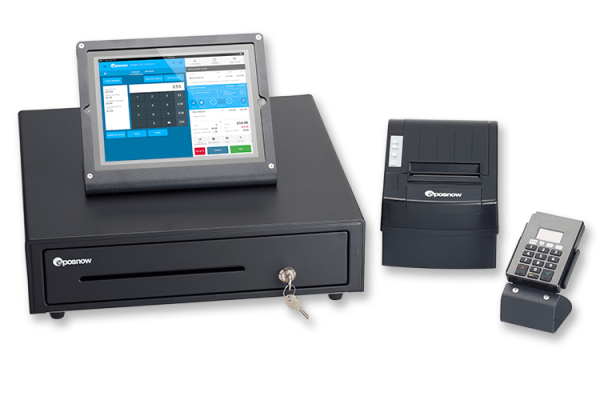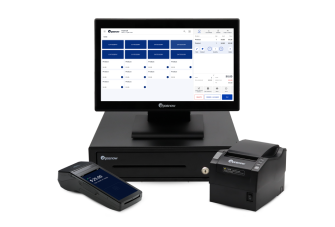How to Accept Credit Card Payments on Android
Since the advent of the COVID 19 pandemic, many businesses in the hospitality and retail industries have decided to move towards mobile payments. Using mobile devices at the point of sale (POS) makes things easier and safer for both the business operator and customers.
Android devices have become a common sight on countertops in shops and restaurants. These devices are often cheaper than IOS devices and so are a popular option for many business owners looking to reduce their overheads.
If you’re planning to use an Android POS system in your business, it’s important to know what they are, how they work, and how you can accept payments on them. In this blog, we’ll be exploring Android POS systems and answering any questions you might have about accepting payments on them.
What is Android?
In short, Android is a mobile operating system based on Linux that was developed in 2005. The project was initially commercially sponsored by Google (now Alphabet) before they acquired Android, Inc, again in 2005. Android OS was first publicly released in 2008 and since then has grown to enjoy a 73% share in the operating system market [1].
There are two main reasons why Android has become the de facto operating system for the majority of businesses. The first is that Android is completely open-source. This means that it is very easy to develop apps for and third-party developers can build apps and functions for free. As the Google Play app store runs on Android, developers have instant access to a huge user base.
The second reason is that Android is used as the OS for a wide variety of smart devices and systems. Because of the wide variety of devices available, business owners and consumers can shop around and find devices that closely fit their needs and budgets.
After the success of Apple Pay in 2014, Google launched their own mobile payment service with 2018’s Google Pay. This opened up mobile payments to millions of people worldwide and helped to popularize the concept of paying with one’s phone.
How do I take credit card payments on Android?
Despite the complicated process that goes on behind the scenes, accepting debit card payments with Android POS systems is very simple. No matter what POS company you use, Android systems generally work the same way as any other POS system. The only main difference is that Android POS systems typically use a tablet or similar device in place of a register.
The Epos Now Android POS System is a great example of this. It uses cutting edge POS technology to automate your processes, manage your staff and stock, and accept payments all from one tablet. This gives you an unprecedented amount of freedom as the tablet doesn’t need to be tethered to one location in your business.
Once your Android system is set up, you’ll be able to start taking payments immediately. Simply use your card reader or take cash as you would with a traditional register. Thanks to Epos Now's payment processing, our Android System is integrated with every major payment processor, so you can negotiate your own fees and customize your system to work the way you want it to.

The basics of payment processing
No matter what kind of business you run, payment processing is perhaps the most important part of it. Without it, you would not be able to accept credit card payments of any kind and miss out on a huge potential revenue stream.
With this in mind, it’s important to understand how payment processing works. While it seems like a very basic transaction from an outsider perspective, it is actually a complicated process with several steps. While we won’t be going into the nitty-gritty technical details, we will instead break payment processing into three steps.
Authorisation
At the point of sale, the merchant totals up the amount owed by the customer. The customer will then be prompted to swipe, tap or insert their card into the card reader. Once the card has interacted with the reader, the bank then verifies the details on the card. These details include:
- Card number
- Expiration date
- Billing address
- Security code
- Total payment amount
Authentication
Once the card details are verified, the business’ acquiring bank will then communicate with the customer’s issuing bank. The issuer verifies the purchase and authorizes the acquiring bank to put a hold onto the customer’s account with turns into a withdrawal once the transaction is completed. The customer is then issued with a receipt by the business’ POS terminal.
Settlement
Once the transaction is verified and completed, the issuing bank releases the payment to the acquiring bank. Depending on the bank, the amount paid, and how it was paid, this can take anywhere from immediately to a couple of days.
Choose the best in Android POS
To ensure that your business thrives, it’s important to make sure that your POS system can handle your day-to-day operations. If you have your heart set on an Android system, there’s really no better option than Epos Now.
From one tablet, you’ll be able to:
- Review profitability reports based on individual product performance, trending items, best and worst sellers, and employee sales
- View sales analyses on profit margin, cash flow, and other expenses
- Access multi-award-winning inventory management systems that sync online sales and in-person sales for the most up-to-date stock levels
- Automate stock purchasing so you never miss a sales opportunity
- Create and send invoices using simple templates and a built-in VAT calculator
- Customer management systems that save customer contact details and shopping preferences for more targeted marketing.
- Schedule emails and SMS messages to be sent at the most impactful time of day
- Integrate with the business automation apps that are right for your business
- Simplify employee management for more efficient scheduling and payroll
If you’re interested in an Epos Now system, contact our expert team.




